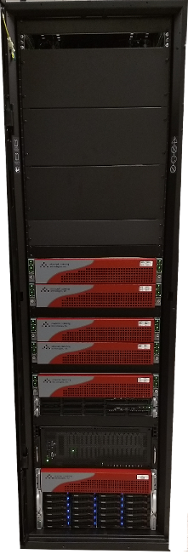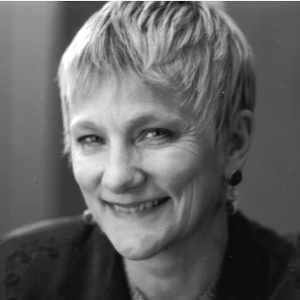Introduction
 borg is a Beowulf-class supercomputer
located in the Department of Computer Science at Calvin University.
It is used for computational modeling by Calvin faculty researchers and for education/research training of Calvin's computer science students.
borg is a Beowulf-class supercomputer
located in the Department of Computer Science at Calvin University.
It is used for computational modeling by Calvin faculty researchers and for education/research training of Calvin's computer science students.
borg is designed to facilitate six research projects, as well as research training activities at Calvin University, including our new Data Science program. The cluster will offer the flexibility to support research activities beyond the local campus, specifically at Macalester College, St. Olaf College, and Wheaton College. By enabling new, as well as enhancing existing research and research training activities at Calvin, the cluster is expected to improve the technological capabilites of the United States cyber-workforce by equipping hundreds of students each year with domain-specific high-performance computing skills in computer science, data science, mathematics, statistics, and the sciences.
borg is funded through National Science Foundation grant 1726260, with additional support provided by the Science Division and Information Technology departments at Calvin University. The principal investigator is Joel Adams, additionally with Mark Muyskens, Douglas Vander Griend, Jason VanHorn, Rebecca (Becky) Haney, Randy Pruim, and Matt Heun. borg is operated by system administrator Chris Wieringa.
Anita Borg
 Anita Borg
Anita Borg
By Source, Fair Use, https://en.wikipedia.org/w/index.php?curid=40824254
The name borg is inspired by, and pays tribute to, Anita Borg, an American Computer Scientist, 1948-2003. She founded the Institute
for Women and Technology and the Grace Hopper Celebration of Women in Computing.
Borg passionately believed in working for greater representation of technical
women. Her goal was to have 50% representation for women in computing by 2020. She strove for technical fields to be places where women would be equally represented
at all levels of the pipeline, and where women could impact, and benefit from, technology.
In 1994, Anita Borg and Telle Whitney founded the Grace Hopper
Celebration of Women in Computing. With the initial idea of creating a conference by and for women computer scientists, Borg and Whitney met over dinner, with a blank
sheet of paper, having no idea how to start a conference, and started to plan out their vision. The first Grace Hopper Celebration of Women in Computing was held in
Washington, D.C., in June 1994, and brought together 500 technical women.
In 1997, Borg founded the Institute for Women and Technology (now the Anita Borg
Institute for Women and Technology). Two important goals behind the founding of the organization were to increase the representation of women in technical fields and to
enable the creation of more technology by women. The Institute was created to be an experimental R&D organization focusing on increasing the impact of women on technology
and increasing the impact of technology on the world's women. It ran a variety of programs to increase the role of technology, build the pipeline of technical women, and
ensure that women's voices affected technological developments.
In 2002, Telle Whitney took over as President and CEO of the Institute, and in 2003, it was
renamed in honor of Borg. Since its foundation, the Anita Borg Institute for Women and Technology has increased its programs in the United States and expanded
internationally, more than quadrupling in size.
Source: https://en.wikipedia.org/wiki/Anita_Borg
Technical Specs
borg is a 25-node Beowulf cluster. It consists of a head node, a virtualization node, a GPU/hi-memory node, a manycore compute node, a file server node, and twenty general-purpose compute nodes.
- 100Gbps Omnipath Network Superfast internal cluster communication
- 40/10Gbps Ethernet Network Really fast general network connectivity
- 100TB Shared Disk NVMe/HDD tiered data storage
-
464 CPU Cores Intel Xeon Gold/Silver CPUs
AMD Epyc 7002 CPUs - 3,488 GB RAM Superfast DDR4 2666Mhz/3200Mhz RAM
Our manycore node consists of two AMD Epyc 7552 48-Core processors, giving us 96 processing CPU cores and 194 simultaenous threads. This machines also comes with 512GB of 3200Mhz DDR4 RAM.
Our GPU node consists of four NVidia Titan-V graphic cards. These cards each have 12GB HBM2 video RAM, 5120 CUDA cores capable of up to 30 Teraflops for general compute, and 640 Tensor cores for up to 110 teraflops of Tensorflow deep learning capability.
History
Calvin University's efforts in high performance computing began in 1998 when Prof. Joel Adams taught Calvin's first parallel computing course using MPI. Since that time, Calvin has built several different clusters, through NSF grants and undergraduate research projects. borg is the third Beowulf supercomputer cluster built using National Science Foundation (NSF) grants.
Resources
The following resources are available for the borg cluster:
Publications
The following research publications have used the borg cluster:
- (N/A)